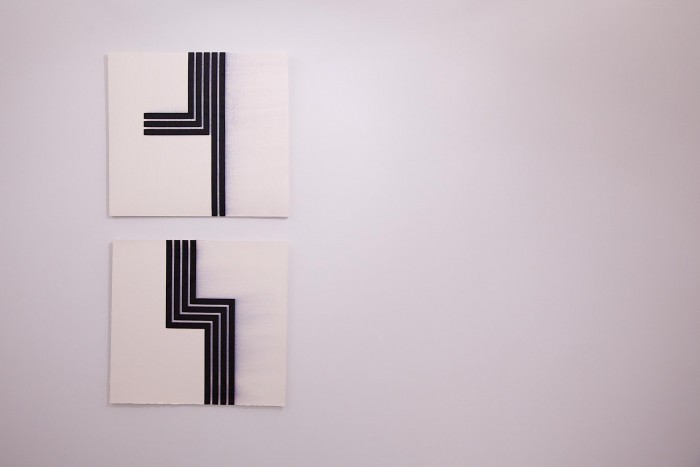
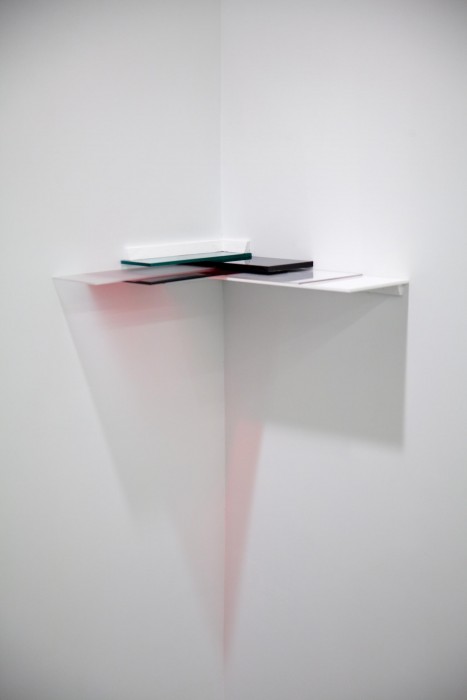
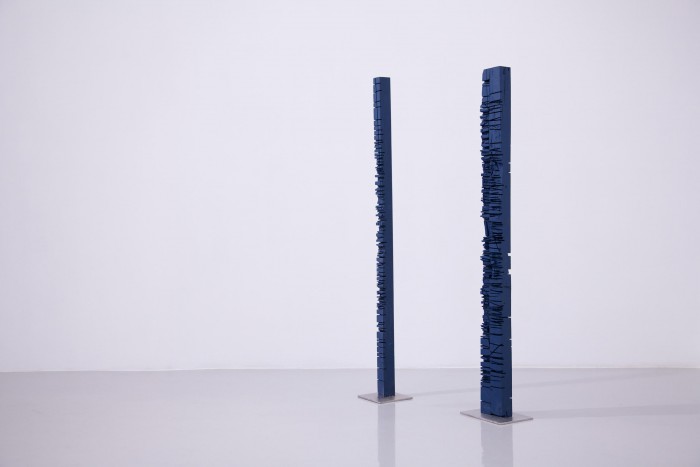
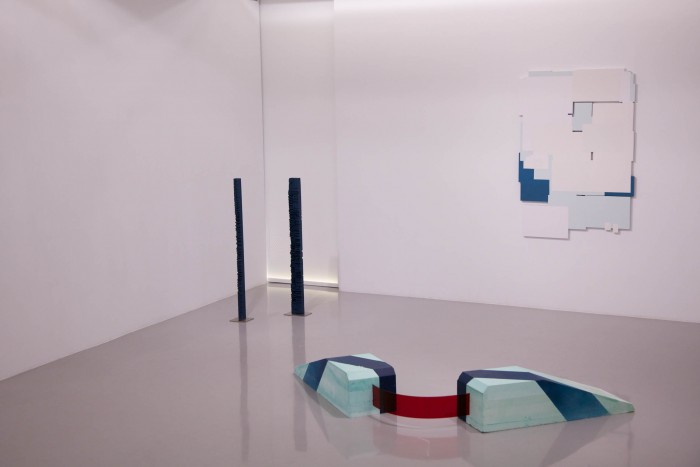
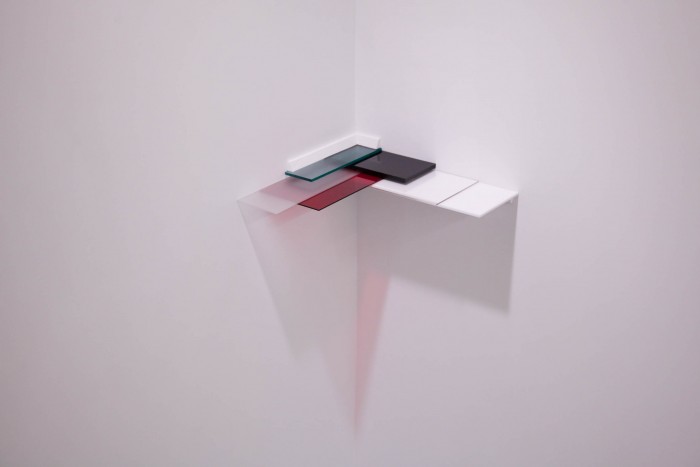
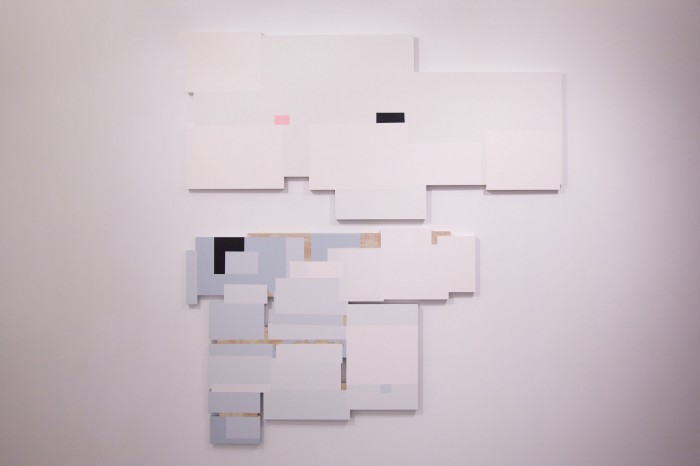
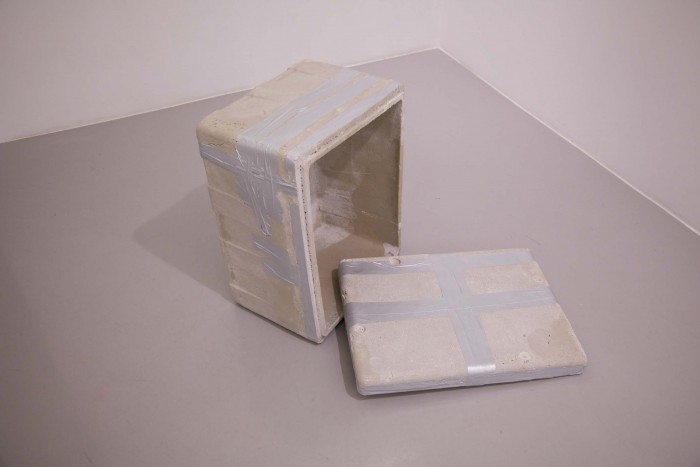
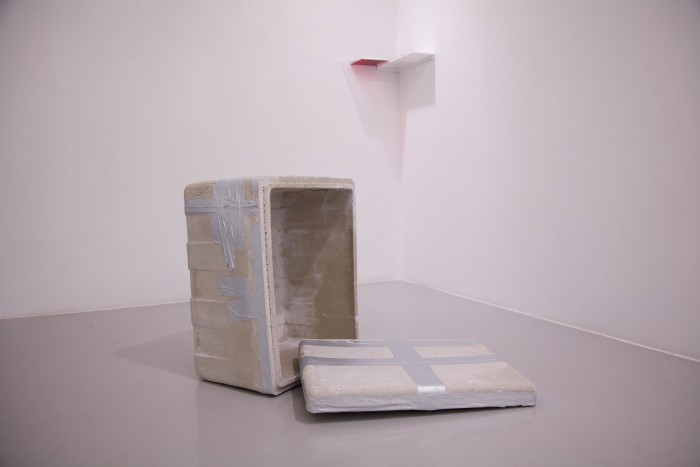
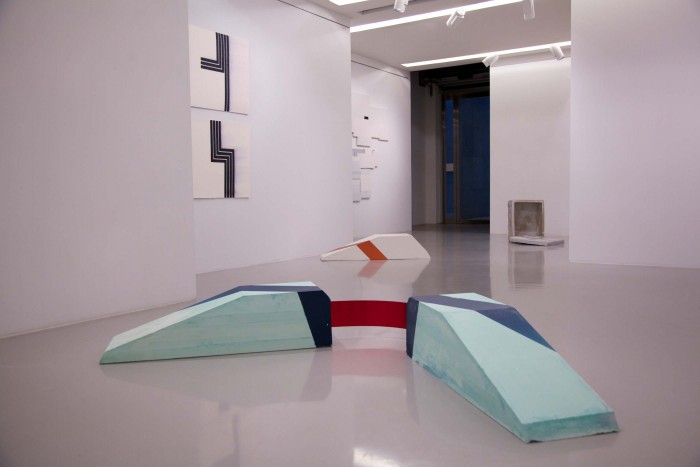
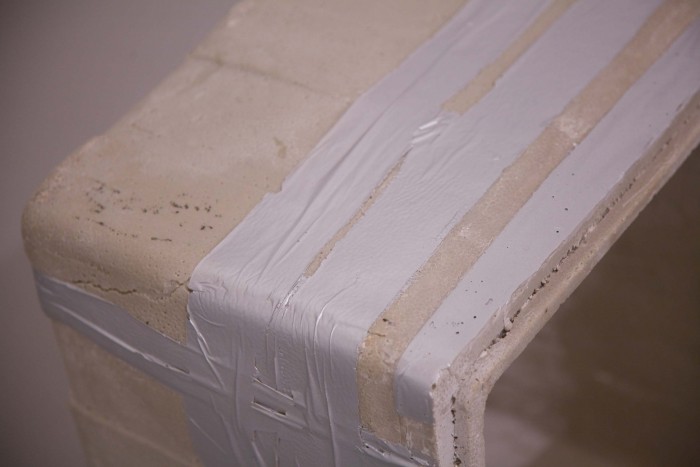
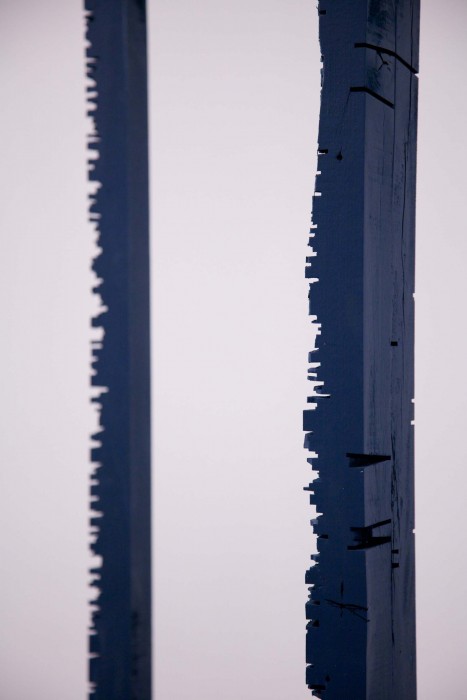
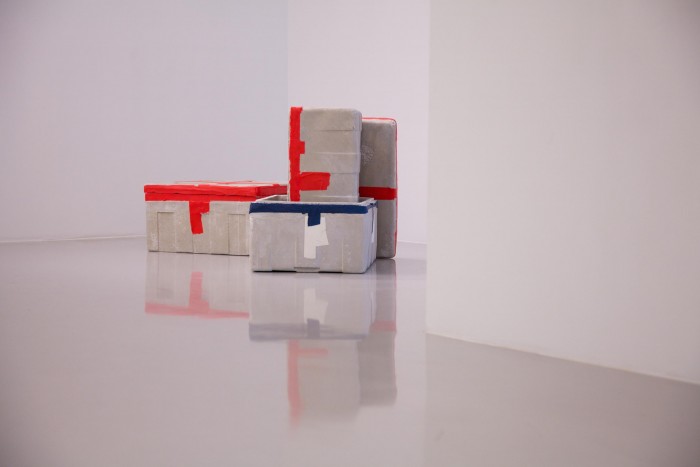
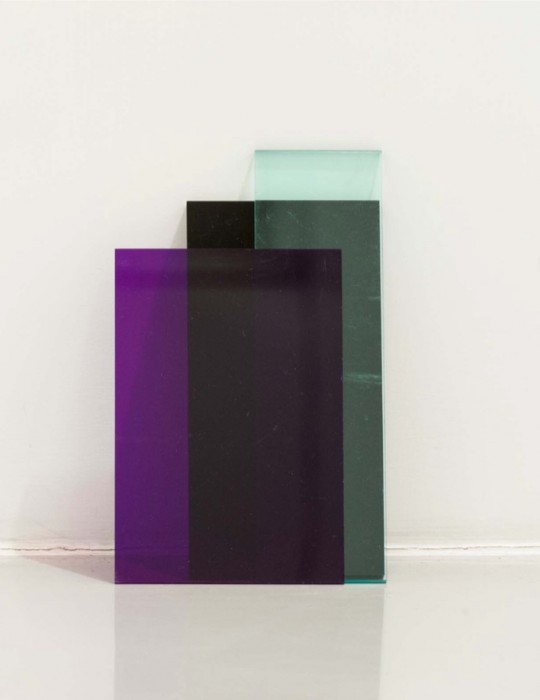
In Near and Elsewhere João Vasco Paiva reconsiders, from an aesthetic perspective, the objects and entities that metropolitan citizens collectively create, form and use to subsequently neglect or discard. From the boarded-up shop fronts camouflaged by a collage of ads, to cast-off plexiglass strips and mark-ridden fences used to prop severed wood, João Vasco Paiva has examined these detruded objects and considered their geometric qualities. By their interaction with multiple individuals, from shop-owners to real estate agents and carpenters, João Vasco Paiva remarks how each entity has unconsciously developed a visual quality that extends their value beyond their original use. As such, Near and Elsewhere presents a series of urban sculptures that are inspired by those shapes and objects that have unintentionally amassed an aesthetic output. These are complemented by a video, which addresses our progressive desensitising to commercial bombardment.
While created from and inspired by objects amassed in and around Hong Kong, each of the sculptures on display are crucially not to be understood as Marcel Duchamp-esque ‘ready-mades’. Indeed, a rigorous process of creation has underpinned each structure so that the final result is a distant variant of the original. Untitled (Lumberyard Array 3) (2013), for example, is in fact a collected fence that João Vasco Paiva has repeatedly cleaned and painted, till the point where its original texture and colour is of the past and the only signs of its previous life are the thin cuts cast upon it. Similarly, the plexi-glass structures, found in the various corners of the gallery space, present the unwanted debris in a new order where their arrangement has been purposely altered to initiate a novel viewing perspective. A Brief Moment in Time I (2013) is a wooden board that has been painted in subtle hues of white and beige to express the geometry that is created by the piling and layering of ads on shop fronts. Furthermore, the objects that resemble the styrofoam boxes used in wet markets are resin-casts lined with paint, while his painting on pulp paper is inspired by pipes on the façades of buildings.
In addition to the reconsidered sculptures described above, João Vasco Paiva presents a couple of works that introduce further lines of tangential thought. The first are a series of floor sculptures that represent speed bumps. While they continue from the artist’s interest in identifying the aesthetic qualities of the mundane - a speed bump is something you literally pass over - João Vasco Paiva presents this object in a contemplative setting, which elicits reflection on how elements that are intrinsic to a city’s infrastructure and functioning are often ignored. The second work also addresses ignoral, but of a different kind: that caused by acceptance rather than lack of interest. The video Threshold (2013), shot in the commercial and congested areas of Sham Shui Po, Mong Kok and Causeway Bay, shows clips of eye-level landscape, blanked of all pieces of text so that all advertising is removed from vision. In juxtaposition with the other works in the gallery, the video urges a revelation: that so much of what we see is accepted within our periphery of vision, despite being visual pollution, while instead so much of what we do not look at twice, actually has aesthetic qualities and is worthy of contemplation.
Overall, Near and Elsewhere encourages a thoughtful reconsideration of what we choose to see and how we interact with it. Inspired by Marc Augé’s discussion of ‘Non-Places’, João Vasco Paiva addresses, in artistic, tangible and visual form, how each person sees things differently: what is of importance to one individual is not necessarily to another. João Vasco Paiva thus presents the possibility, that if recast in an alternative form, and presented in an alternative setting, our perceptions of significance may be shifted: what was once ‘near’ may be cast to being ‘elsewhere’, and vice-versa.